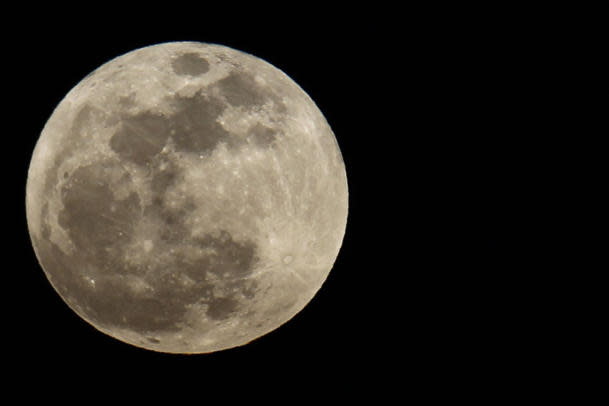 Science and Weather
Science and WeatherJust how ‘super’ is this weekend’s ‘supermoon’?
June 23rd's full moon is a supermoon; in fact, it's the super-est supermoon of the year. But what does that mean?
If you're not familiar with the term supermoon, that's because — at least in terms of astronomy — it's pretty new. The term wasn't really thrown around in astronomical circles much before the March 19, 2011 full moon. But if you know your sign and which house your ascendant is in, you might recognize it. The term is actually a crossover from astrology, and refers to a new or full moon occurring when the moon is within 90% of its closest approach to Earth (thanks to the moon's slightly oval orbit).
Within 90% might not sound like that high a hurdle to clear and, in fact, it isn't. Using that guideline, there are an average of 4 to 6 supermoons per year.
This weekend's supermoon has an edge, though, that makes it more interesting. Not only is the moon within 90% of its closest point, it's actually the closest approach of this year — the closest it will be to Earth until August next year.
Combining the two events — full moon and the closest approach, or perigee — will treat us to a somewhat pumped-up moon this weekend.
Last year's perigee full moon, in May, was about 14 per cent bigger and 30 per cent brighter than an average full moon. With this year's perigee slightly closer, This weekend's moon may best those numbers, but it probably won't be by too much.
So, is this super supermoon all that much more spectacular than a regular full moon? Not really, but that's okay, because the full moon is always beautiful, especially in a cloudless sky on a warm summer evening. We may as well take advantage of the little boost when we get it. Summer is a great time to get out and observe the night sky, especially if you can take advantage of an un-light-polluted cottage or campground sky, and a pair of binoculars. You can also check out star parties in your area. The official time of the full moon is Sunday, June 23 at 7:32 a.m. EDT, but it's super-ness should be apparent all night.
[ More Geekquinox: Fungus fracas delays opening of space station cargo ship ]
If you're looking for a little more action in your celestial events, the next blockbuster of the year will be the Perseids Meteor Shower, coming up in early August.
(Images courtesy: Patrick T. Fallon/Reuters, Wikimedia Commons)
Geek out with the latest in science and weather.
Follow @ygeekquinox on Twitter!




